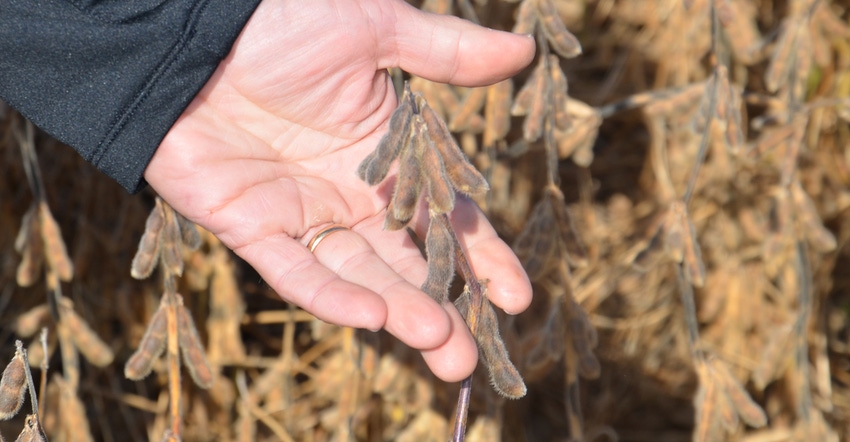
It didn’t take Steve Gauck long to find insect damage in the Soybean Watch ’20 field in early October. While this wasn’t a particularly troublesome year for soybean insects, they were around — still feeding and damaging beans inside pods.
“What we have more trouble deciding is if they caused enough damage to affect yield,” explains Gauck, a regional agronomy manager for Beck’s, based near Greensburg, Ind. “If so, did they hurt yield enough to have justified spraying an insecticide earlier?”
Related: What you want: Nodes filled to the top
Beck’s sponsors Soybean Watch ’20. This field wasn’t treated with fungicides or insecticides. It was irrigated with several passes late in the summer.
Gauck suggests asking the following questions as you prepare to grow soybeans in 2021:
Would seed treatment insecticides help? “You need to separate early-season insect control from whether or not you should control insects with mid- or late-season treatments,” Gauck says. “Seed treatments can help with insects that cause seedling damage, and with the control of first-generation bean leaf beetles. However, they’re not going to be around to help with bean leaf beetles or stinkbugs, which might show up in mid- or late season.”
Should you apply an insecticide midseason? Midseason in this case usually refers to reproductive stages, Gauck says. People pursuing higher yields and good soybean quality may apply insecticides every year, he notes. Others may consider adding an insecticide if they see insects feeding, or if they use a scouting service and the consultant says there is enough pressure to treat. However, many people don’t scout and don’t typically apply an insecticide.
“You ought to be out there looking, or have someone else looking for you,” Gauck says. “There have been situations over the last few seasons where applying insecticides for stinkbugs or bean leaf beetles would definitely have paid.”
Can you apply insecticide at the same time as fungicide? Gauck suspects more people typically apply fungicides to soybeans than insecticides, seeking higher yields through disease control. The question always arises: Can you add in the insecticide at the same time?
“It may depend, but often the timing won’t match up,” Gauck says. “We’ve seen best results for applying fungicides at the R3 stage. However, stinkbugs, for example, may not show up until around the R5 stage. If you applied the insecticide a few weeks before, it may no longer be very effective.”
How do you develop a strategy? It’s going to depend upon your goals: Are you after top yield, top economic yield or seed quality because you have a premium market?
“Start there and think strongly about starting a scouting program if you don’t scout now,” Gauck says. “You need to continue it until soybeans are nearly mature, because some pod-feeding insects can come in late. In addition, if you haven’t tried insecticides before, you might set up a strip trial in a field and see if it pays.”
About the Author(s)
You May Also Like




